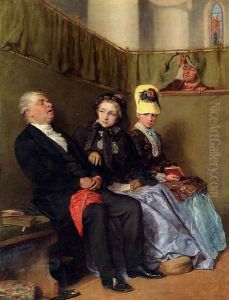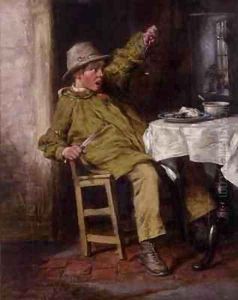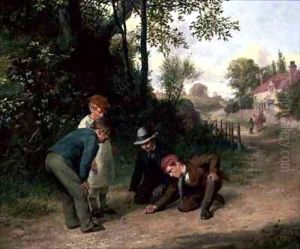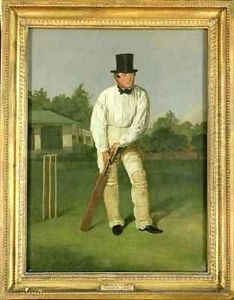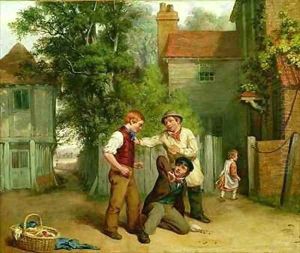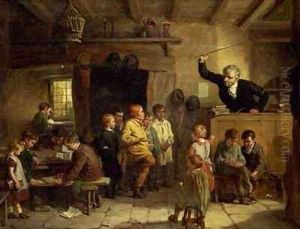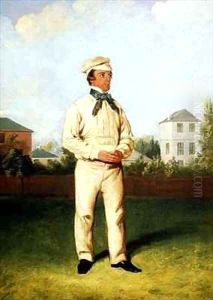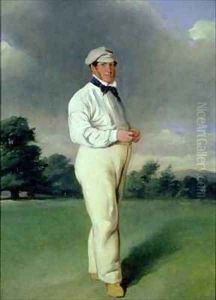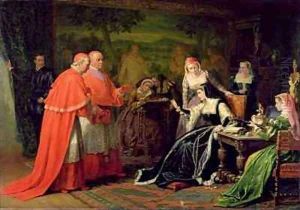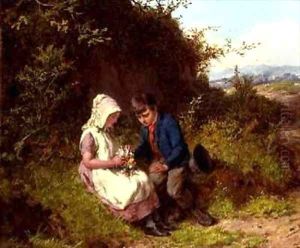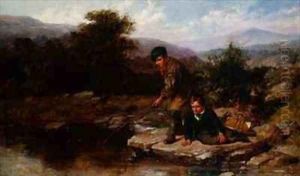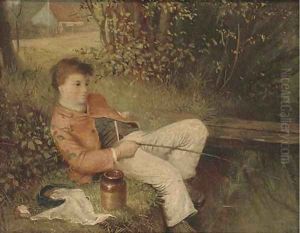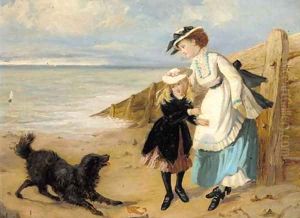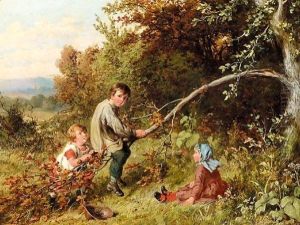William Bromley III Paintings
William Bromley III was a British engraver and artist, born in the year 1835. Coming from a lineage of engravers, with both his father, William Bromley II, and grandfather, William Bromley I, being noted figures in the field, Bromley III was almost predestined to follow in their artistic footsteps. His career was marked by a dedication to the craft of engraving, a process involving the incising of a design onto a hard surface, by cutting grooves into it, which was a highly respected art form during his lifetime.
Bromley's education and early career were steeped in the traditional techniques of engraving, which he mastered under the guidance of his father and through formal art education. The mid-19th century was a period of significant change in the art world, with new printing techniques beginning to emerge. However, Bromley remained committed to the traditional engraving methods, believing in the depth and richness that manual engraving could bring to prints.
Throughout his career, William Bromley III worked on a variety of projects, including landscapes, portraits, and historical scenes. He was particularly renowned for his ability to capture intricate details and his skill in rendering textures, which made his works highly sought after by publishers and the public alike. His engravings were often featured in books, magazines, and as standalone pieces, contributing to the popularization of visual art during the Victorian era.
Despite the advent of photographic processes and other technological advancements in printing towards the latter part of the 19th century, Bromley's work retained its appeal. His dedication to the craft earned him respect among his contemporaries and later generations of artists and historians. Bromley's legacy is not just in the beauty of his engravings but also in his commitment to an art form that required patience, precision, and a deep appreciation of the visual arts.
William Bromley III's life came to an end in 1888, but his contributions to the world of engraving have ensured his place in the annals of British art history. Through his works, Bromley demonstrated the enduring value of traditional engraving techniques, leaving behind a rich legacy that continues to inspire admiration and respect.
